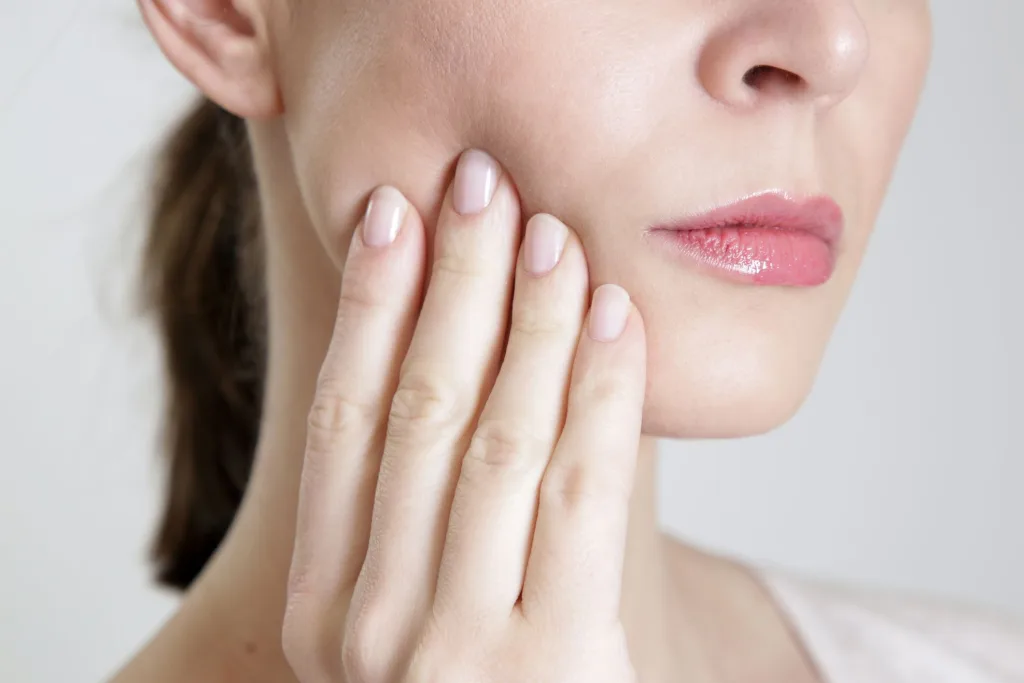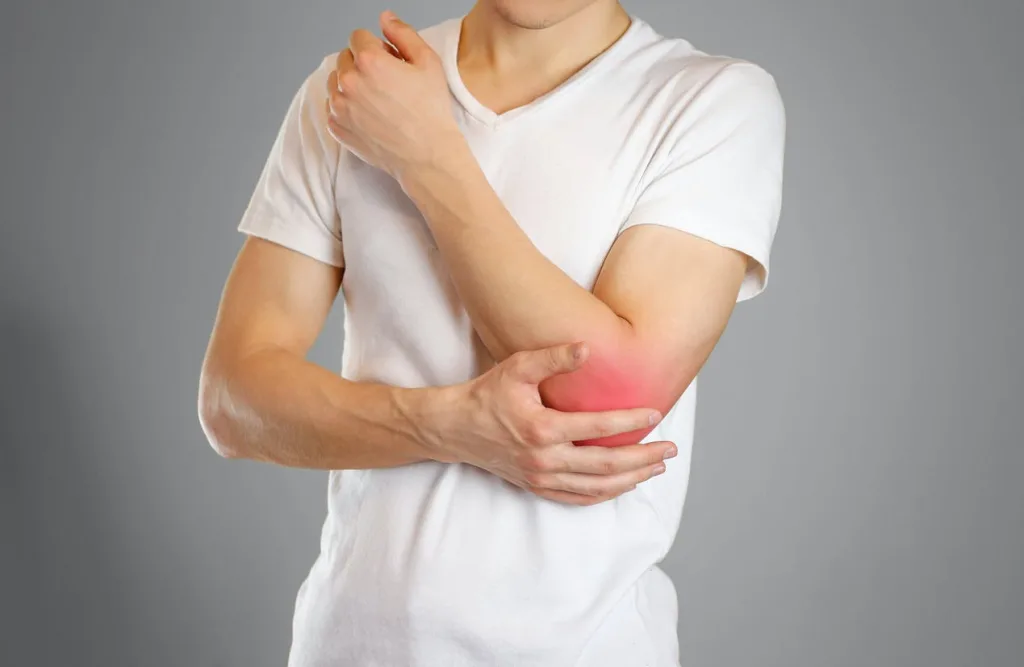Bony prominences, or bony landmarks, are areas of the body with prominent bones that can be easily felt by palpation. These areas are especially prone to pressure-related injuries such as bedsores and ulcers, so it’s important to be aware of them.
The most commonly identified bony prominences include the crest of the hip bone (iliac crest), sacrum, tailbone (coccyx), shoulder blades (scapulae), shoulder joints (acromion processes), and heel bones (calcanei). In more medical terms, other bony prominences include the infraspinatus, deltoid, erector spinae, semispinalis capitis, and gluteal muscles.
Palpation is a technique used to assess these areas and evaluate their shape and width of the underlying bone. This helps distinguish a pressure ulcer from other skin ulcers since pressure ulcers typically form over bony prominences due to poor circulation caused by constant pressure.
For tose at risk of developing bedsores or pressure sores—especially non-mobile patients—it’s important to regularly check for bony prominences and monitor any changes in shape or size. By doing this on a regular basis, you can help prevent any further damage from occurring in these areas. Additionally, it’s important to make sure that these areas are adequately padded when lying down for long periods of time in order to reduce the chances of developing a pressure sore.
All in all, it’s essential to be aware of your body’s bony prominences in order to help prevent any potential injuries or complications that may arise from prolonged pressure on certain areas. By monitoring these areas for any changes through regular palpation checks and ensuring proper padding when lying down, you can help ensure your safety and health.
Examples of Bony Prominences
Bony prominences are areas of the body where the underlying bone is particularly close to the surface of the skin, creating a raised area. Some examples include the acromion process of the scapula (shoulder blade), the zygomatic arch (cheekbone), the mastoid process of the temporal bone, and the greater trochanter of the femur (thigh bone). Other bony prominences include the occipital protuberance at the back of the head, and various ridges and bumps on other bones such as those in hands and feet.

Assessing Bony Prominences
Assessing bony prominences involves a few steps. Firstly, palpation should be used to assess the shape and width of the bony prominence underneath the lesion. By gently running your fingers along the area, you should be able to detect any raised areas that may indicate a pressure ulcer. Secondly, if no bony prominence is felt, then other skin ulcers should be considered as a potential diagnosis. Finally, imaging techniques such as x-rays or ultrasound can also be used to help determine the location and extent of any bony prominences.
Bone Prominences: What Are They?
Any raised or prominent part of the edge of a bone is referred to as a crest. These protrusions are composed of hard, dense bone and form the sites where connective tissue attaches muscle to bone within the body. Crests can be found in many areas throughout the skeletal system, such as along the upper ridge of the skull or near certain joints.
Risk of Developing Bed Sores Due to Bony Prominences
Bony prominences are areas of the body where the skin is closest to the bone and thre is less padding from fat and muscle. When a person remains in one position for an extended period of time, the pressure on these bony prominences can lead to the development of bedsores. This is because the pressure reduces the blood flow to these areas, which prevents oxygen and nutrients from reaching them. Over time, this can lead to damage of the underlying tissue and cause bedsores. To prevent this from happening, it is important to frequently change positions while lying down and use specialized pillows or mattresses to reduce any pressure on these bony prominences.
The Meaning of Prominence in Medical Terms
In medical terms, prominence refers to a raised area or protrusion on a structure or body part. It can refer to the enlargement of an anatomical structure, such as a bone, due to increased growth or other factors that cause the protrusion. Prominences are often associated with abnormal growths, tumors, or swelling due to inflammation. They can also be caused by trauma, infection, or other conditions that result in an increase in size of the affected area.
Are Pressure Ulcers Limited to Bony Prominences?
No, pressure injuries (PIs) are not only limited to bony prominences. Although PIs are commonly found over bony prominences, in paediatric populations they can also occur due to medical devices or objects. This is due to the fact that children’s skin is thinner and more fragile than that of adults, whih makes them more vulnerable to forming PIs. It is important for healthcare professionals and caregivers to take extra precautions when caring for children, as their skin may be more easily damaged than that of adults. Pressure injuries can form quickly and cause pain and discomfort, so it is essential to ensure that any medical device or object used on a child is well-padded and pressure relieved regularly in order to prevent PIs from forming.
Causes of Pressure Ulcers
Pressure ulcers, also known as bedsores or pressure sores, are caused by a lack of blood flow to the skin. The three primary contributing factors to pressure ulcers are pressure, friction, and shear.
Pressure occurs when there is a constant force placed on any part of the body, wich can restrict the normal flow of blood to the tissues. Friction is created when the skin rubs against clothing or bedding, resulting in damage to the skin. Finally, shear occurs when two surfaces move in opposite directions and cause injury to the underlying tissue.
Preventing pressure ulcers requires regular movement and changes in position so that no part of your body remains in one spot for too long. Additionally, using proper bedding and cushions can help reduce friction and shear forces that may lead to pressure ulcers.
Do Pressure Ulcers Need to be Located on Bony Prominences?
No, a pressure ulcer does not have to be on a bony prominence. Pressure ulcers can occur anywhere on the body and are most oten found on areas of the body that are subject to prolonged pressure, such as the sacrum, heels, elbows, shoulders, and hips. However, due to the nature of bony prominences and their lack of soft tissue coverage, they are particularly susceptible to pressure ulcers. Other factors that can increase an individual’s risk for developing a pressure ulcer include limited mobility, poor nutrition, comorbidities, aging skin, excessive moisture or friction from clothing or bedding, and immobility or shearing forces that can cause tissue damage.
The Causes of Bony Prominence
Bony prominence is a condition in which there is an abnormal protrusion of bone from the surrounding tissue. It can be caused by a variety of things, such as trauma or repetitive motions. In some cases, it can be caused by an underlying medical condition such as osteoarthritis, degenerative joint disease, or rheumatoid arthritis. In these cases, the bony prominence is usually due to the deterioration of cartilage around the joint as a result of these conditions. Other causes of bony prominences include localized infections in and around the joint, tumors or cysts within the bone, and congenital deformities. In some cases, bony prominences may also be due to hereditary conditions such as hyperostosis or acromegaly.

The Meaning of a Prominent Bone
A prominent bone means that a point on the body is visible because the bone is immediately belw the skin’s surface. This can be either normal or abnormal. In the case of normal bony landmarks, it simply means that the bone is more easily felt or visible than other bones, such as those located deeper in the body. However, if it is an abnormal prominence, it could be caused by reactive outgrowths of bone (exostoses), benign tumours (e.g., osteoma) or malignant tumours (e.g., osteosarcoma). It is important to have any abnormal prominence checked by a doctor to rule out any potential health problems.
What Is a Bone Bump Called?
A bone bump is called an osteophyte, which is a bony lump or “bone spur” that develops on the bones of the spine or around joints. Osteophytes are most commonly associated with osteoarthritis, a condition that causes pain and stiffness in joints. Osteophytes can grow from any bone, but they’re most commonly found in the neck, shoulder, and lower back.
Ulcers Forming Over Bony Prominences
Pressure ulcers, also knwn as bedsores or decubitus ulcers, are particularly likely to form over bony prominences. These are areas of the body where bones protrude close to the surface of the skin and can be easily subject to prolonged pressure. Common areas for pressure ulcer formation include the heels, elbows, hips and base of the spine. Pressure ulcers can range from red patches on the skin to shallow open sores which can become infected if left untreated. Risk factors for pressure ulcer development include immobility, excessive moisture in contact with skin, poor nutrition or a weakened immune system. To reduce the risk of developing pressure ulcers, people should avoid staying in one position for too long and maintain good nutrition and hydration levels.
Risk of Bedsores in Different Bones
Bedsores, also known as pressure ulcers, are areas of skin breakdown caused by unrelieved pressure and friction. They most commonly occur over bony prominences such as the tailbone, hips, heels of the feet, shoulder blades, back of the head and backs and sides of the knees. These bones are at highest risk for bedsores due to their proximity to the surface of the skin and lack of padding between them and an external surface. The risk is further increased when a person is bed-ridden or otherwise immobile for an extended period of time. To prevent bedsores, it’s important to regularly reposition the body so that no one area is under constant pressure or friction.
The Effects of a Bedsore Reaching the Bone
When a bedsore goes to the bone, a serious infection known as osteomyelitis can develop. Osteomyelitis is a bacterial infection of the bone caused by bacteria entering the wound from the bedsore. When the bacteria infects the bone, it begins to spread and cause damage. Common signs and symptoms of osteomyelitis include severe pain in the affected area, fever, chills, excessive sweating, lower back pain, swelling of the ankles, feet and legs, and warmth and redness arond the affected area. In more serious cases, patients may develop sepsis or even death. Treatment for osteomyelitis usually involves antibiotics as well as surgery to remove any dead bone tissue. With prompt treatment and care, most patients can recover fully from this condition.
Conclusion
In conclusion, bony prominences are raised or prominent parts of bone that can be palpated. These areas are important to consider when diagnosing pressure ulcers and other skin ulcers. Non-mobile patients are especially vulnerable to bedsores, as the bony prominences in their bodies may be less padded by muscle and fat. It is important to identify and monitor any bony prominences for signs of pressure sores or other skin ulcers.
